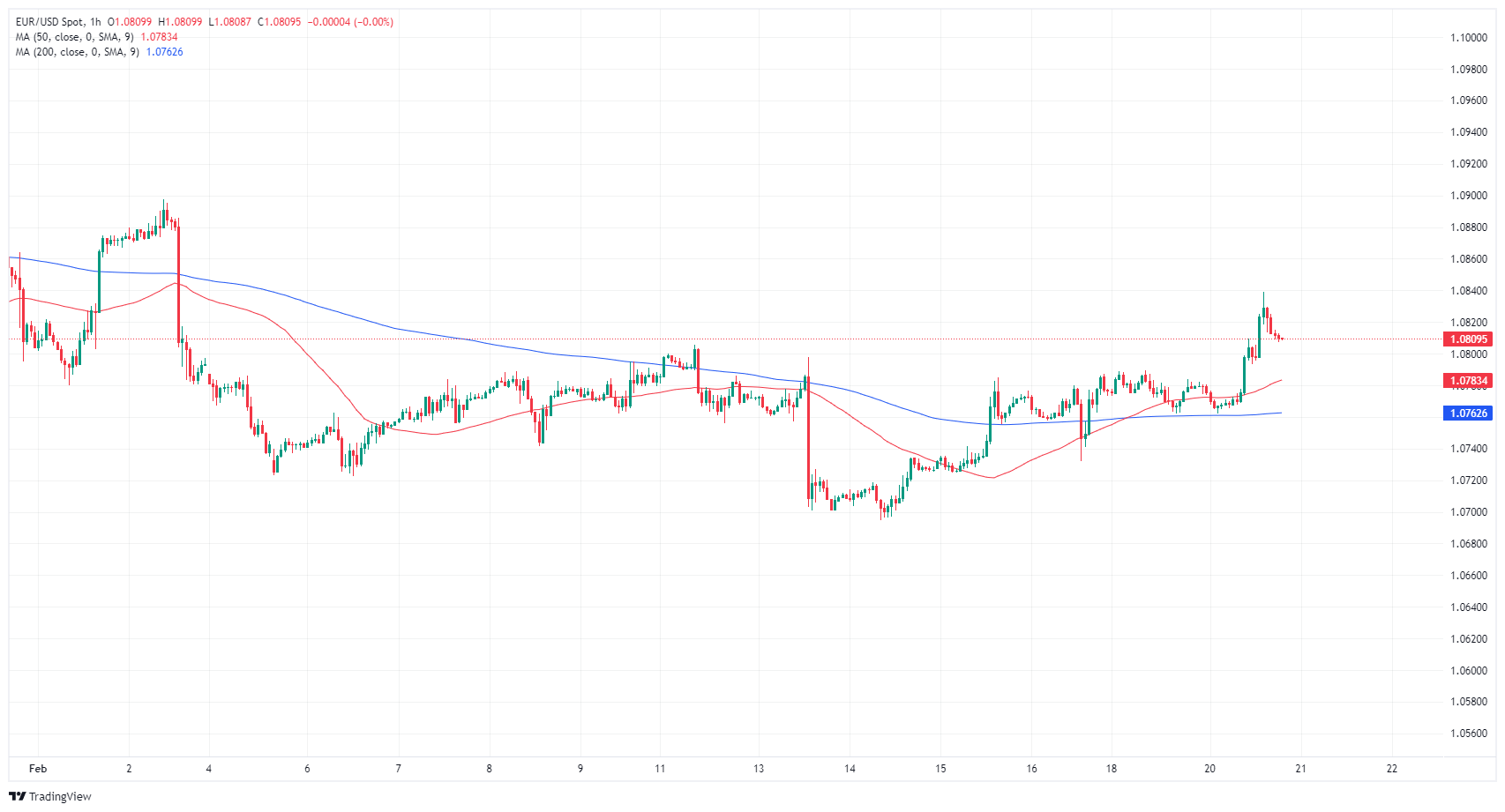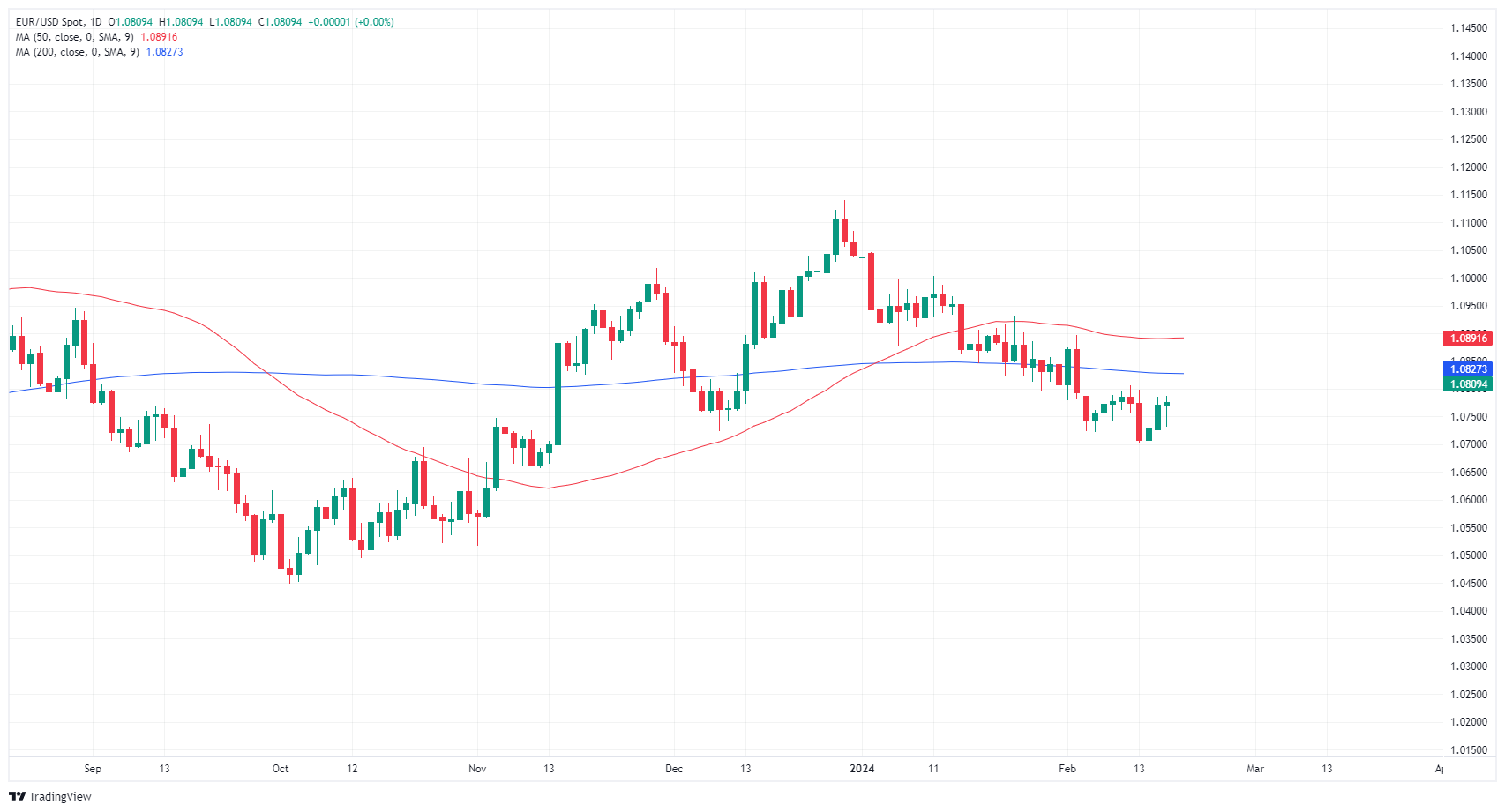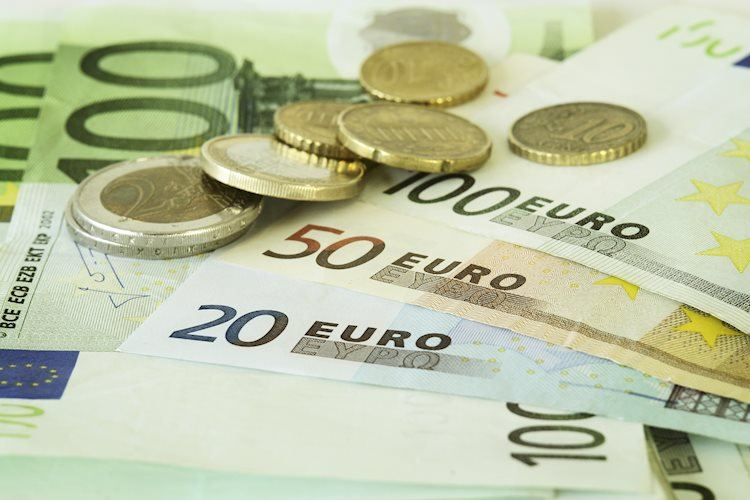- EUR/USD climbed above 1.0800 early Tuesday, testing the 1.0840 region.
- Broad market US Dollar sell-off props up the Fiber.
- Markets await Fed Meeting Minutes, EU PMIs.
EUR/USD climbed to a two-week high just shy of 1.0840 on Tuesday after the US Dollar (USD) broadly fell before recovering in the US trading session after American markets returned to the fold following an extended weekend. EUR/USD reclaimed the 1.0800 handle for the first time in a week as the pair grapples with jump-starting a bullish recovery.
Markets are gearing up for the latest Meeting Minutes from the Federal Reserve’s (Fed) Federal Open Market Committee (FOMC). European markets are also buckling down for the wait to euro area Purchasing Managers Index (PMI) figures due on Thursday.
Daily digest market movers: EUR/USD recovers ahead of Fed minutes, EU PMI activity data
- Broad market flows dominate EUR/USD as investors await the Fed’s latest Meeting Minutes.
- Investors continue to hope for faster, sooner rate cuts from the FOMC.
- According to the CME’s FedWatch Tool, money markets are pricing in a first rate cut in June of at least 25 basis points.
- Markets still see five rate cuts in 2024 compared to the Fed’s own expectations of three.
- European PMIs on Thursday broadly expected to improve but still remain in contraction territory as the pan-European economy grapples with sluggish growth and a softening landscape.
- Germany’s HCOB Composite PMI in February expected to recover to 47.5 in February compared to January’s 47.0.
- The euro area’s broader HCOB Composite PMI is forecast to bounce to 48.5 from 47.9 in February.
- Europe’s final Harmonized Index of Consumer Prices (HICP) for the year ended in January is expected to reiterate the preliminary print of 3.3% YoY.
- US PMIs will follow on Thursday but are expected to soften with the Services component forecast to decline to 52.0 from 52.5, while the Manufacturing component is expected to tick down to 50.5 from 50.7.
Euro price today
The table below shows the percentage change of Euro (EUR) against listed major currencies today. Euro was the strongest against the Canadian Dollar.
| USD | EUR | GBP | CAD | AUD | JPY | NZD | CHF | |
| USD | -0.32% | -0.29% | 0.12% | -0.34% | -0.19% | -0.44% | -0.13% | |
| EUR | 0.32% | 0.03% | 0.44% | -0.02% | 0.12% | -0.11% | 0.19% | |
| GBP | 0.29% | -0.03% | 0.41% | -0.05% | 0.10% | -0.15% | 0.16% | |
| CAD | -0.12% | -0.44% | -0.39% | -0.45% | -0.31% | -0.56% | -0.25% | |
| AUD | 0.34% | 0.02% | 0.05% | 0.46% | 0.15% | -0.10% | 0.21% | |
| JPY | 0.19% | -0.13% | -0.11% | 0.31% | -0.14% | -0.26% | 0.06% | |
| NZD | 0.42% | 0.12% | 0.15% | 0.54% | 0.11% | 0.18% | 0.30% | |
| CHF | 0.13% | -0.19% | -0.17% | 0.25% | -0.19% | -0.07% | -0.32% |
The heat map shows percentage changes of major currencies against each other. The base currency is picked from the left column, while the quote currency is picked from the top row. For example, if you pick the Euro from the left column and move along the horizontal line to the Japanese Yen, the percentage change displayed in the box will represent EUR (base)/JPY (quote).
Technical analysis: EUR/USD approaches 1.0840 before buckling under pressure
The EUR/USD came within range of 1.0840 in Tuesday’s early recovery before paring back into the 1.0800 zone. The pair remains bolstered by the 200-hour Simple Moving Average (SMA) near 1.0760. The Fiber continues to grind out a near-term bullish recovery, but technical resistance continues to build as lower highs weigh.
EUR/USD remains trapped on the bearish side of the 200-day SMA at 1.0830, and the pair’s recent descent into 1.0700 represents the EUR/USD’s lowest bids since November. The pair is set for a fifth consecutive bullish close but is still down around 3% from December’s peak at 1.1140.
EUR/USD hourly chart
EUR/USD daily chart
Euro FAQs
The Euro is the currency for the 20 European Union countries that belong to the Eurozone. It is the second most heavily traded currency in the world behind the US Dollar. In 2022, it accounted for 31% of all foreign exchange transactions, with an average daily turnover of over $2.2 trillion a day.
EUR/USD is the most heavily traded currency pair in the world, accounting for an estimated 30% off all transactions, followed by EUR/JPY (4%), EUR/GBP (3%) and EUR/AUD (2%).
The European Central Bank (ECB) in Frankfurt, Germany, is the reserve bank for the Eurozone. The ECB sets interest rates and manages monetary policy.
The ECB’s primary mandate is to maintain price stability, which means either controlling inflation or stimulating growth. Its primary tool is the raising or lowering of interest rates. Relatively high interest rates – or the expectation of higher rates – will usually benefit the Euro and vice versa.
The ECB Governing Council makes monetary policy decisions at meetings held eight times a year. Decisions are made by heads of the Eurozone national banks and six permanent members, including the President of the ECB, Christine Lagarde.
Eurozone inflation data, measured by the Harmonized Index of Consumer Prices (HICP), is an important econometric for the Euro. If inflation rises more than expected, especially if above the ECB’s 2% target, it obliges the ECB to raise interest rates to bring it back under control.
Relatively high interest rates compared to its counterparts will usually benefit the Euro, as it makes the region more attractive as a place for global investors to park their money.
Data releases gauge the health of the economy and can impact on the Euro. Indicators such as GDP, Manufacturing and Services PMIs, employment, and consumer sentiment surveys can all influence the direction of the single currency.
A strong economy is good for the Euro. Not only does it attract more foreign investment but it may encourage the ECB to put up interest rates, which will directly strengthen the Euro. Otherwise, if economic data is weak, the Euro is likely to fall.
Economic data for the four largest economies in the euro area (Germany, France, Italy and Spain) are especially significant, as they account for 75% of the Eurozone’s economy.
Another significant data release for the Euro is the Trade Balance. This indicator measures the difference between what a country earns from its exports and what it spends on imports over a given period.
If a country produces highly sought after exports then its currency will gain in value purely from the extra demand created from foreign buyers seeking to purchase these goods. Therefore, a positive net Trade Balance strengthens a currency and vice versa for a negative balance.
